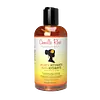What's inside
What's inside
 Key Ingredients
Key Ingredients

 Benefits
Benefits

 Concerns
Concerns

 Ingredients Side-by-side
Ingredients Side-by-side

Propanediol
SolventOlea Europaea Fruit Oil
MaskingHoney
HumectantRicinus Communis Seed Oil
MaskingAloe Barbadensis Leaf Juice
Skin ConditioningVaccinium Myrtillus Fruit Extract
Skin ConditioningSaccharum Officinarum Extract
MoisturisingCitrus Aurantium Dulcis Fruit Extract
MaskingCitrus Limon Fruit Extract
MaskingAcer Saccharum Extract
Skin ConditioningGlycine Soja Seed Extract
Skin ConditioningCurcumin
AntioxidantPhenoxyethanol
PreservativeCaprylyl Glycol
EmollientPropanediol, Olea Europaea Fruit Oil, Honey, Ricinus Communis Seed Oil, Aloe Barbadensis Leaf Juice, Vaccinium Myrtillus Fruit Extract, Saccharum Officinarum Extract, Citrus Aurantium Dulcis Fruit Extract, Citrus Limon Fruit Extract, Acer Saccharum Extract, Glycine Soja Seed Extract, Curcumin, Phenoxyethanol, Caprylyl Glycol
Water
Skin ConditioningPropanediol
SolventCetearyl Alcohol
EmollientCetyl Alcohol
EmollientCocos Nucifera Oil
MaskingBehentrimonium Methosulfate
Prunus Amygdalus Dulcis Oil
Skin ConditioningTheobroma Cacao Seed Butter
EmollientTheobroma Grandiflorum Seed Butter
Skin ConditioningButyrospermum Parkii Butter
Skin ConditioningMaltodextrin
AbsorbentHoney
HumectantArgania Spinosa Kernel Oil
EmollientRicinus Communis Seed Oil
MaskingPanthenol
Skin ConditioningPhospholipids
Skin ConditioningBiotin
AntiseborrhoeicTocopheryl Acetate
AntioxidantCamellia Sinensis Leaf Extract
AntimicrobialPhenoxyethanol
PreservativeCaprylyl Glycol
EmollientRosmarinus Officinalis Leaf Extract
AntimicrobialVegetable Oil
Skin ConditioningDisodium EDTA
Parfum
MaskingWater, Propanediol, Cetearyl Alcohol, Cetyl Alcohol, Cocos Nucifera Oil, Behentrimonium Methosulfate, Prunus Amygdalus Dulcis Oil, Theobroma Cacao Seed Butter, Theobroma Grandiflorum Seed Butter, Butyrospermum Parkii Butter, Maltodextrin, Honey, Argania Spinosa Kernel Oil, Ricinus Communis Seed Oil, Panthenol, Phospholipids, Biotin, Tocopheryl Acetate, Camellia Sinensis Leaf Extract, Phenoxyethanol, Caprylyl Glycol, Rosmarinus Officinalis Leaf Extract, Vegetable Oil, Disodium EDTA, Parfum
Ingredients Explained
These ingredients are found in both products.
Ingredients higher up in an ingredient list are typically present in a larger amount.
Caprylyl Glycol is a humectant and emollient, meaning it attracts and preserves moisture.
It is a common ingredient in many products, especially those designed to hydrate skin. The primary benefits are retaining moisture, skin softening, and promoting a healthy skin barrier.
Though Caprylyl Glycol is an alcohol derived from fatty acids, it is not the kind that can dry out skin.
This ingredient is also used as a preservative to extend the life of products. It has slight antimicrobial properties.
Learn more about Caprylyl GlycolHoney comes from bees. It is mainly made up of the sugars fructose and glucose.
Besides sugar, honey also contains amino acids, peptides, Vitamins A, C, and E. Vitamins A, C, and E.
As a humectant, honey is great at hydrating the skin. Humectants draw moisture from the air and hold it to your skin.
Honey also has antioxidant and antioxidant properties. Fun fact: darker honey has more antioxidants than light honey.
The antibacterial property of honey may make it effective at helping to treat acne. We recommend speaking with a professional if you have concerns.
Many people wonder if honey is vegan. It is technically a byproduct from bees. This is because honey is created from the digestive enzymes in a bee's stomach.
Remember to be kind to bees :) They are important for many ecosystems and are endangered.
Learn more about HoneyPhenoxyethanol is a preservative that has germicide, antimicrobial, and aromatic properties. Studies show that phenoxyethanol can prevent microbial growth. By itself, it has a scent that is similar to that of a rose.
It's often used in formulations along with Caprylyl Glycol to preserve the shelf life of products.
Propanediol is an all-star ingredient. It softens, hydrates, and smooths the skin.
It’s often used to:
Propanediol is not likely to cause sensitivity and considered safe to use. It is derived from corn or petroleum with a clear color and no scent.
Learn more about PropanediolRicinus Communis Seed Oil is the INCI name for castor oil.
Castor Oil helps moisturize the skin. It is rich in a fatty acid called ricinoleic acid. This fatty acid helps prevent moisture loss on the skin. This helps keep your skin soft and hydrated. Ricinoleic acid also has anti-inflammatory and pain reducing properties.
Besides hydrating the skin, castor oil is also used to hydrate hair. By keeping the hair shaft moisturized, breakage is decreased. More studies are needed to show castor oil's effective on stimulating hair growth.
Castor oil is created by cold-pressing castor seeds and then purifying the oil with heat. It was used in Ancient Egypt as fuel in lamps and to help treat eye irritation.
The term 'fragrance' is not regulated in many countries. In many cases, it is up to the brand to define this term. For instance, many brands choose to label themselves as "fragrance-free" because they are not using synthetic fragrances. However, their products may still contain ingredients such as essential oils that are considered a fragrance.
Learn more about Ricinus Communis Seed Oil